Learning how to freeze peppers from your garden or the farmers market is easy!
One of the gardeners in our community who purchased my book, Super Easy Food Preserving chose to freeze peppers as her first food preserving task of the season. She sent me this email:
This is the best money I’ve spent all month!! Yellow and red peppers at the farmers market are $.50 each right now. Organic red peppers in January will cost $5 each.
There’s no doubt about it – a red pepper at the peak of the season tastes nothing like its waxy, dull tasting, unnatural looking cousin sitting on the shelf in January. And they’re way easier on the wallet during the booming summer harvest months.
It’s such a pleasure to cook in summer with food that’s fresh from the garden or market. Meals come together easily because all you need to do is highlight and augment the amazing taste of the featured vegetables.
With a little extra work in summer and fall that kind of cooking is within your reach all year round.
You can appreciate the abundance of the season while it’s here, and also save some for later. Preserved food makes cooking in the winter so much more fun…and tasty!
My book, Super Easy Food Preserving, makes putting food away for off-season use accessible and simple.
My sister, a beginning gardener, called me recently and was excited that she froze some of her red peppers. She looked at the book’s directions for preserving and there were four steps. “Only four steps,” she said, “I can handle that!”
You can, too! Let’s freeze peppers together this year.
.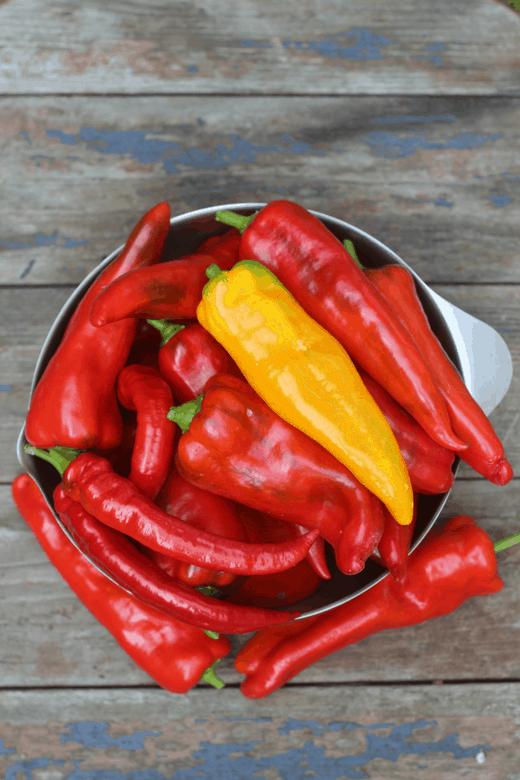
This post contains affiliate links.
Sourcing Sweet & Hot Peppers for Freezing
I think colorful sweet peppers are one of the most fun vegetables to grow in the home garden, but they can be a little tricky. Hot peppers tend to be much easier to grow in most climates and produce a large amount of peppers per plant.
I have a large urban garden, about 1600 sq. ft., and I usually grow about 35 sweet pepper and 5 hot pepper plants.
I hear from a lot of gardeners that peppers are one of the vegetables (fruits!) they have trouble growing. Which varieties of sweet peppers you grow are very important, especially if you live in a northern climate like I do. I’ve tried many varieties over the years and keep returning back to the same top performers.
You can learn all you need to know in this essential guide to growing sweet peppers.
If you don’t grow peppers, but are still interested in freezing them, wait until the peak of pepper season (usually August/September) and then make a visit to a local u-pick farm or your town’s farmers market. This is the time when peppers will be at the height of taste and color and the most inexpensive.

Freeze Peppers in 4 Simple Steps
You don’t have to have fancy equipment, special knowledge, or even a big garden to be a food preserver. All you need to do is start with one thing that’s coming out of your garden or is abundant at the farmers market.
Pick a vegetable you eat a lot of during the off season and set a goal to put some away for later use. Believe me, you will be ecstatic to pull red peppers out of your freezer on a gloomy winter day and use them to cook up a delicious pot of chili or a Friday night pizza for your family.
You’ll feel like you somehow cheated the system!
You can use these directions to freeze any kind of pepper – sweet or hot. I’d suggest storing them in separate, well-labeled containers so you don’t inadvertently mix them up.
Prep Materials Needed: Cutting board and knife (I love this one!); rubber kitchen gloves for hot peppers
Best Storage containers: Freezer bags, wide mouth glass jars, plastic storage containers, or old large yogurt containers
Step 1: De-stem and De-seed Peppers
Use your knife to remove the stems and seeds of the peppers. If you’re freezing hot peppers, you can leave the seeds if you want a little extra spice.
Be very careful if you’re chopping lots of hot peppers. I usually work with them last. You should wear rubber kitchen gloves so you don’t end up with burning hands at the end.
One time I chopped so many jalapenos without gloves that I couldn’t fall asleep that night because the skin on my hands was so hot. I laid in bed with my hand in a container of buttermilk!
Wash everything, including your gloves, in hot soapy water when you’re done processing the hot peppers to remove all of the oils. And try not to touch your face or eyes during the process!
I’ve done that, too. Ouch.
I like to de-stem and de-seed everything first and then move on to the next step.
Step 2: Chop
When I’m freezing vegetables I like to cut them into serving size pieces so I don’t have to do any additional chopping when I’m ready to use them later. For peppers I chop them into bite-sized pieces like the photo above.
In winter I just take a handful out of a bag and throw them into the pan or pot. So easy!
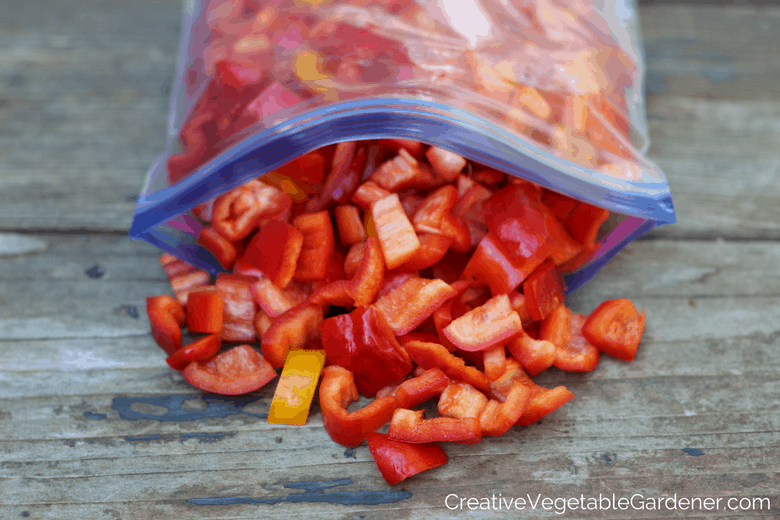
Step 3: Load into Containers
Peppers can be frozen raw so simply pack them into your containers or bags. They’re not liquid, so you don’t have to worry about glass breaking in the freezer if you’re choosing to store them in jars.
If the peppers are dry after chopping, you don’t have to worry about them sticking together. If you washed them and they happen to be wet, you can spread them out on a cookie sheet and put them in the freezer for a few hours. Then pack them into your storage containers.
Step 4: Freeze Peppers
The best place to store your frozen peppers is in a chest freezer. If you’re getting serious about food preserving you’ll want to invest in one.
The freezer contained in your kitchen fridge (upright freezer) goes through periodic defrost cycles, which is why your ice cream is a bit soft sometimes when you dig it out for a late night snack.
A chest freezer stays at a constant temperature of zero degrees F. This is better for long lasting frozen food quality.
When you freeze your peppers they’ll last up to one year – but you’ll probably eat them all first!
Ta-da! A few simple steps to freeze peppers for winter. That’s it!
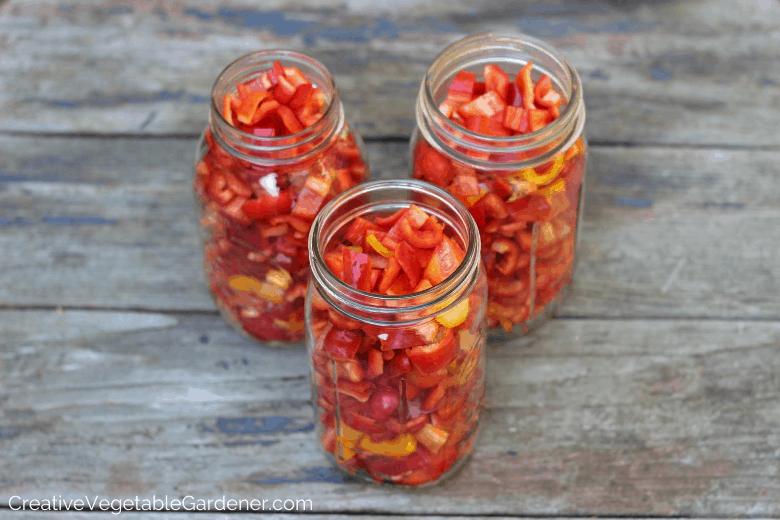
Best Containers for Freezer Storage
We’re trying to reduce our overall plastic use in our house. For many of my frozen food items I use wide mouth glass quart, pint and half pint glass canning jars.
Peppers aren’t difficult to remove from these jars, so they’re definitely an option.
When I use freezer bags I try to care for them so they last several seasons in a row and then they’re often downgraded to hold other random household objects. But, they still do wear out and need to be thrown away.
If you have the budget, or plan to just freeze small amounts of food, you could invest in Stasher bags (or some other reusable silicone based bag).
You can also use plastic tupperware type containers for freezing vegetables,
See all of my recommended garden tools, books, seeds, and easy preserving supplies in my Amazon storefront.
How Much to Freeze
I find that a quart-sized amount of frozen peppers (bag or jar) lasts for several meals depending on how I’m using it in a recipe.
I recommend keeping a record of how much food you’re preserving each year so you can evaluate whether you’re putting away too much, not enough, or exactly how much you need.
When you freeze peppers it’s best to try to eat them (and other vegetables) within one year.
I checked my records and I usually freeze 5-6 quart bags of sweet peppers and 2 of hot peppers for winter. This usually isn’t enough to last until the following year’s pepper harvest. I always wish I had more!
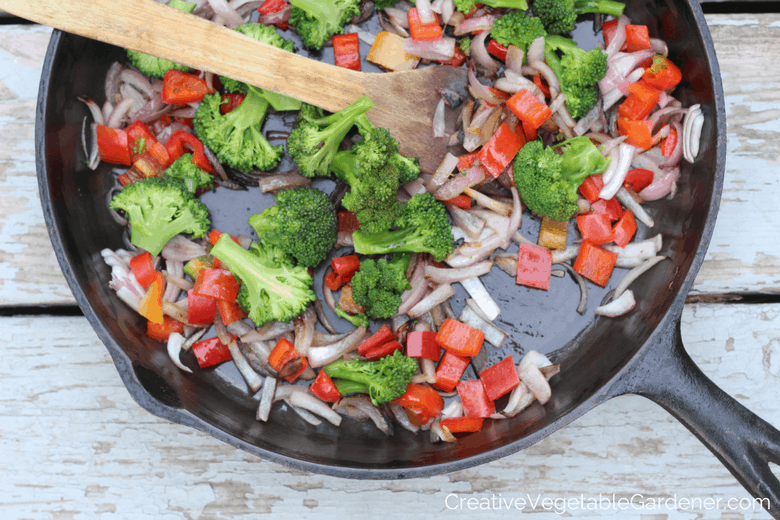 Cooking a January meal with peppers, broccoli, onions and garlic all from my pantry.
Cooking a January meal with peppers, broccoli, onions and garlic all from my pantry.
Favorite Recipes for Using Frozen Peppers
Learning how to preserve your extra vegetables is only one part of the equation. Once you have that down you can start searching out recipes that highlight the vegetables you’ve put away. That’s the fun part!
I love to use frozen peppers in soups, stews, chili, pizza, and stir-fries throughout the dark winter months. I simply take out a freezer bag and grab a handful when I need it.
I don’t usually defrost the peppers first. I throw them in frozen.
Frozen vegetables never have the same consistency as their raw counterparts, so they’re best used in cooked dishes.
Here are some of my favorite recipes I’ve discovered over the years that are a great complement to frozen peppers.
Thai Red Curry with Vegetables from Cookie and Kate
Wild Fried Rice Recipe from 101 Cookbooks, I like adding whatever veggies I have on hand to this recipe
Chili, Tacos, and Frittatas, all from Love and Lemons
Friday Night Pizza, my recipe

If it’s pepper harvest time in your area right now, take a trip to the farmers market and load up a bag full of peppers of all colors of the rainbow and squirrel them away for those winter meals!
And if you love the idea of having a stash of frozen peppers you grew yourself to use in your favorite dishes all winter long, make a plan to plant more than you can eat fresh this season.
Additional Resources for Stocking Your Pantry
FREE MINI-COURSE: Get Started Stocking Your Pantry for Winter. I’ll show you how simple it can be to fill your pantry with lots of healthy food that will save you money and many trips to the grocery store this winter!
This free mini-course features 5 videos + worksheets to help you:
- Deconstruct your favorite meals to set your food preserving priorities
- Explore 4 quick and easy options for preserving food (besides canning!)
- Discover delicious ideas for featuring your preserved food in healthy recipes all winter long
MASTERCLASS: This winter, imagine grabbing all the ingredients you need for a meal right from your pantry without having to go to the grocery store! With a few simple techniques you can continue to enjoy food grown in your own garden (or purchased from the farmers market) throughout the long, cold months of winter.
This class will teach you how to make every harvest last longer by quickly and easily preserving vegetables at the height of their season. You’ll love the feeling of sitting down to a meal and knowing a large part of it came from your garden!
BOOK:
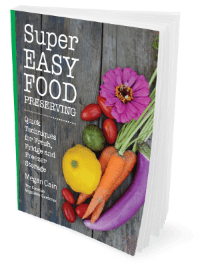
Preserving some of your excess produce is the best way to make your garden harvests last all year. And, preserving doesn’t have to be difficult or take up a lot of time.
My book, Super Easy Food Preserving, features the simplest and quickest way to preserve each fruit, vegetable, and herb. Read more about it here.
BLOG ARTICLES: Discover more about how to easily preserve food from your garden and the farmers market this harvest season.
- Here’s How to Quickly Freeze Kale
- The #1 Thing to Know Before You Start Preserving Food
- How to store beets from your garden when you have a bumper harvest
.
SHARE IT ON PINTEREST

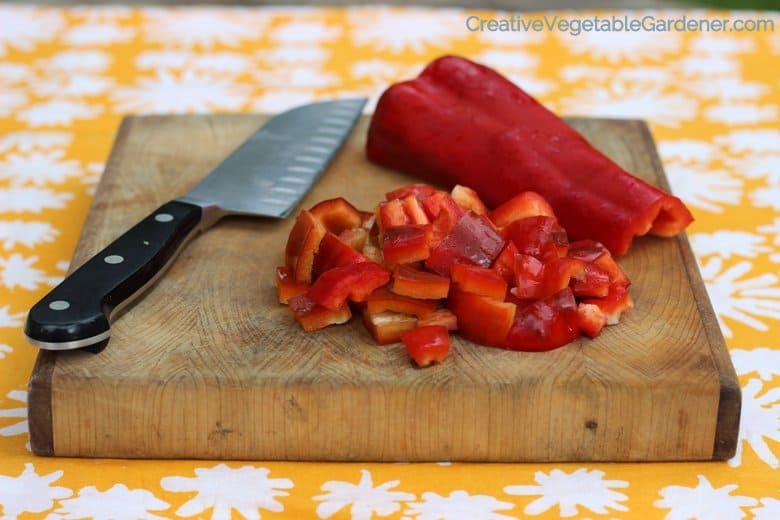

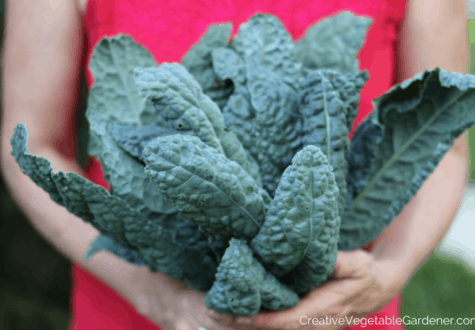
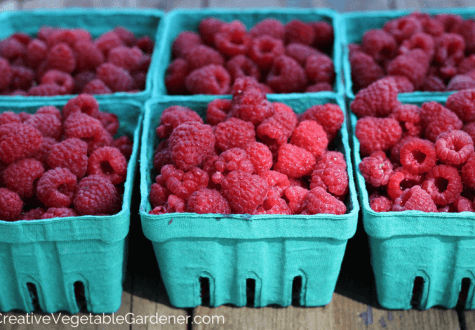




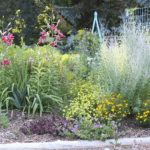
Comments
[…] Freezing Red Peppers […]
[…] pizza sauce gifted to us by friends Broccoli and red and yellow peppers harvested last fall, chopped and stored in freezer bags Onions and garlic, both harvested last July and stored in our basement since […]
[…] We use the peppers in rice and beans (a staple in our house) and any recipe that calls for cooked peppers. They don’t have the same consistency as fresh peppers, but they’re way cheaper than buying red peppers in the middle of January. (Read my full post about freezing peppers here.) […]
I notice most things are for feezing why not hydrate surely easier for storing + use especially for a prepper
Hi Lynn- I teach about what I do at home and I don’t tend to like dehydrating. It requires an investment in equipment and I think it’s too much work. It is a great way to preserve food though!
I’d love how to freeze fresh veggies. Thank You